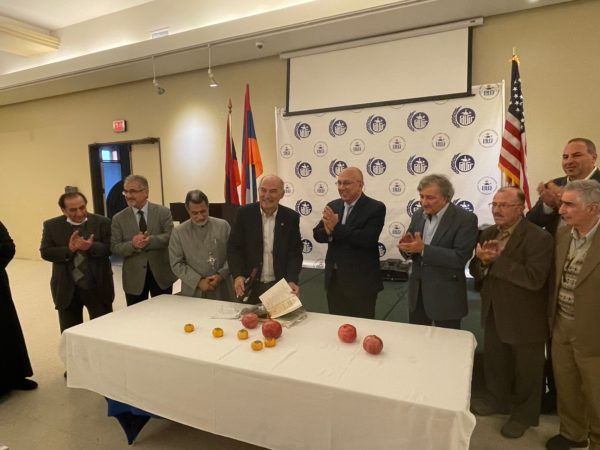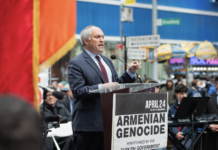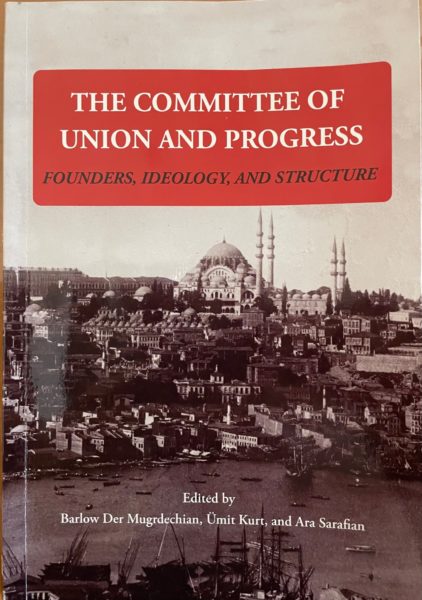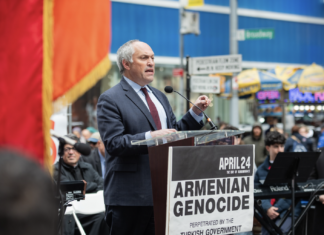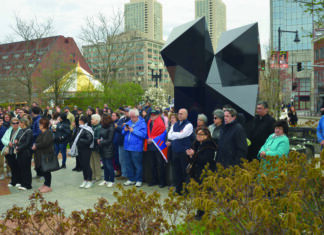ALTADENA, Calif. — A traditional book presentation which included pouring wine over the pages and blessings by Archbishop Hovnan Derderian, brought Prof. Barlow Der Mugrdechian, the coordinator of the Armenian Studies Program and director of the Center for Armenian Studies at Fresno State all the way to the Tekeyan Cultural Association (TCA) Beshgeturian Center in Altadena on Saturday, November 6. The event was cosponsored by the Armenian Studies Program and the TCA Metro Los Angeles chapter.
Der Mugrdechian was presenting the book he had co-edited with Umit Kurt and Ara Sarafian, The Committee of Union and Progress, Founders, Ideology, and Structure.
The volume consists of five articles by five scholars; it was first introduced during a 2018 conference at California State University, Fresno.
According to Der Mugrdechian, there is not much information and research regarding the Committee of Union and Progress (CUP), the group in power during the Genocide. This created a perfect opportunity for the authors of the book to do in-depth research through studying the biographies of members and the group’s history in local communities.
“These scholars did very good work to help to understand the mindset what was the Committee of Union and Progress doing, what were its founders thinking, and how was it structured, which is also very important,” said Der Mugrdechian, who learned new information himself from this research.
The CUP was established in 1889 with a different name: the Committee of the Ottoman Union.





